Schools share information about student learning experiences through various means – newsletters, websites, social media and email. Cooke Elementary School took it one step further and invited parents to take part in learning experiences themselves at its Family Makerspace Night. The event showcased activities ranging from green screen videos to coding Ozobots.
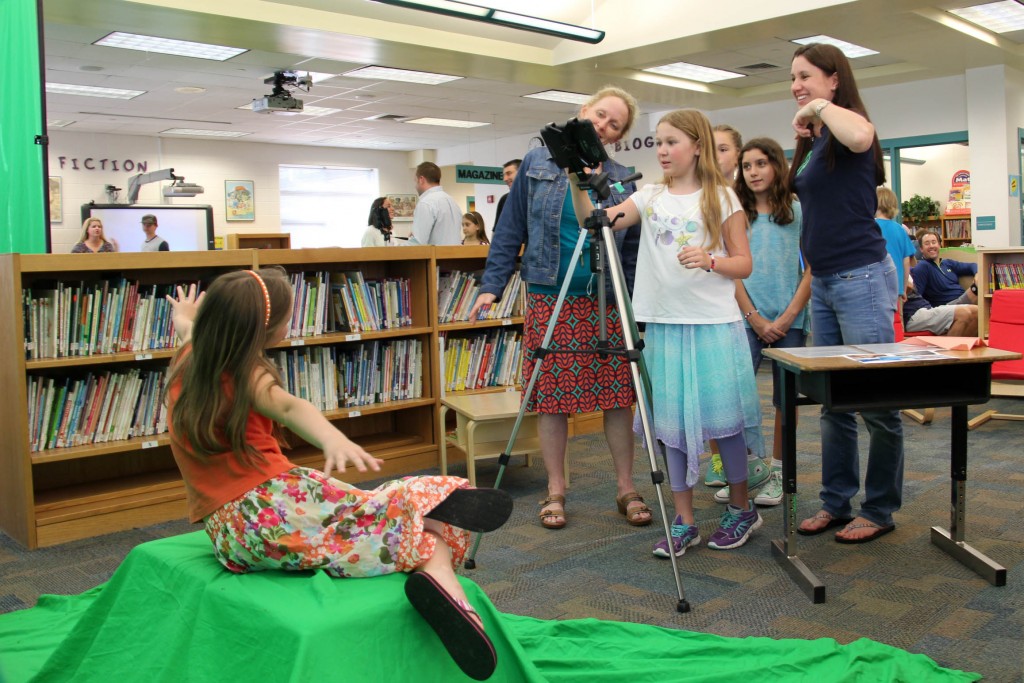 Parents and students visited activity stations set up in three locations in the school, rotating to a new location every 30 minutes.
Parents and students visited activity stations set up in three locations in the school, rotating to a new location every 30 minutes.
“The event allows the parents and families to see what we are doing with our makerspace,” said Kaitlin Jensen, instructional technology specialist at Cooke.
“In the library, it’s more technology-based items. Down the hall we have more building and construction type things – building with cardboard, building with paper, building with cups. And downstairs in the cafeteria we have our Ozobots out, origami and paper airplane design challenge and binary code bracelets,” Jensen explained.
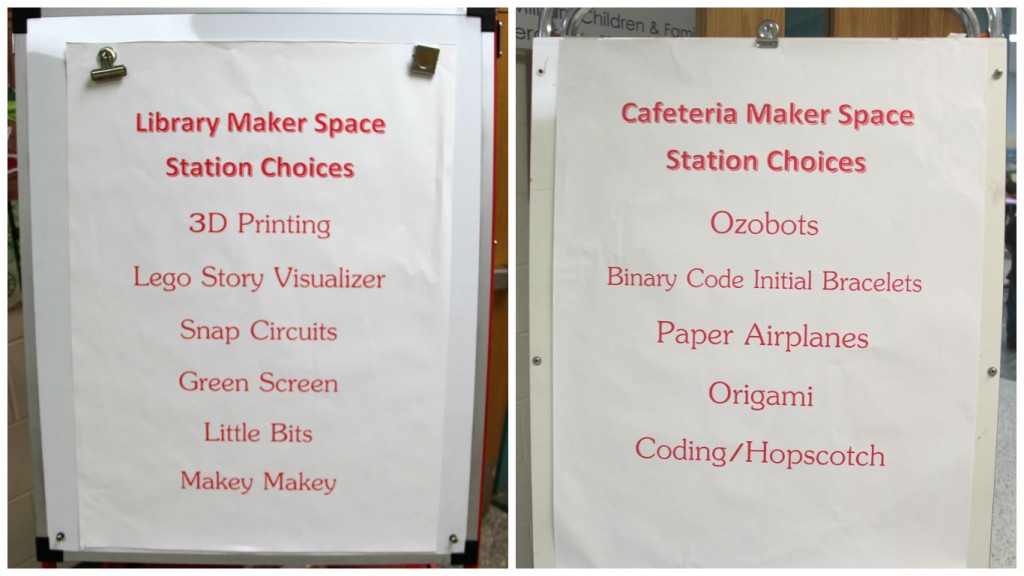 She turned her attention to the room full of people waiting to use the 3-D printer purchased by the school with support from a Virginia Beach Education Foundation (VBEF) innovative learning grant.
She turned her attention to the room full of people waiting to use the 3-D printer purchased by the school with support from a Virginia Beach Education Foundation (VBEF) innovative learning grant.
“Tonight you’re going to design your own keychain with your name,” Jensen announced. “If you want to see what it looks like when it comes out of the printer, you can see the one I printed out there. I’m going to turn on the printer and start printing another one in just a second.”
They did want to see, and they were eager to create their own.
 Nearby, Cooke library media specialist Amy Rille coached students to use expressions related to the green screen background they selected.
Nearby, Cooke library media specialist Amy Rille coached students to use expressions related to the green screen background they selected.
“Look this way and look scared,” she told one student who wanted to be under the sea with a shark.
“Now paddle real fast like you’re trying to escape,” coached Rille joined by parents behind the iPad filming the scene.
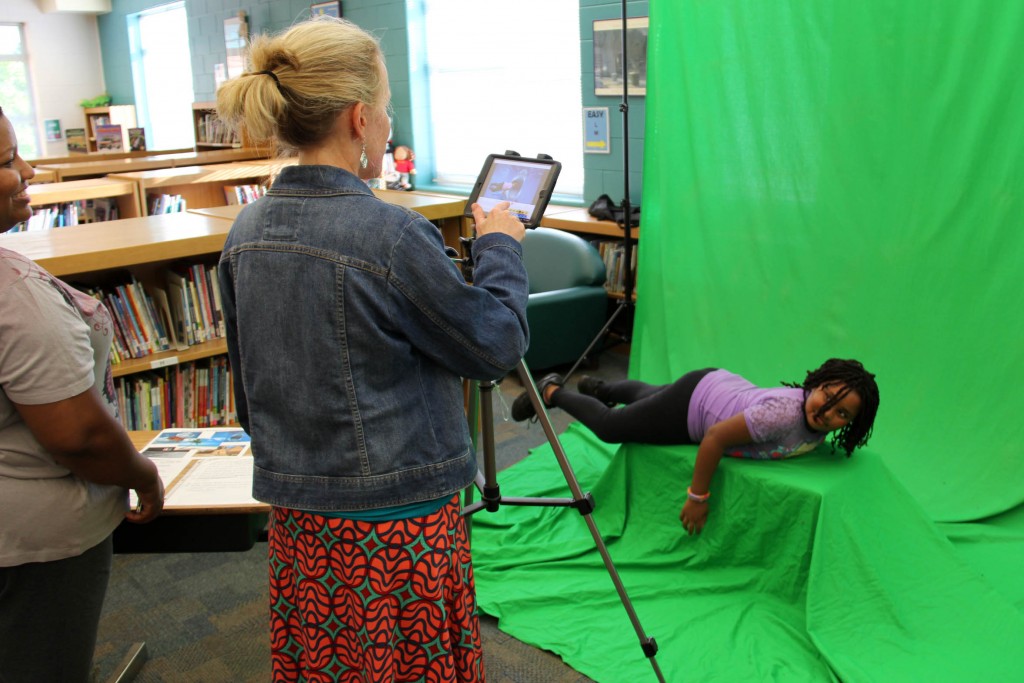 Another student hula danced across a green screen beach. A third student opted to sit and fly on a magic carpet.
Another student hula danced across a green screen beach. A third student opted to sit and fly on a magic carpet.
Families also used various circuit kits to make propellers spin and lightbulbs turn on. One station showed participants how to turn bananas and playdoh into conductive materials used as controllers to play video games.
 On the less technical side were building activities that brought an equal amount of joy to students and parents.
On the less technical side were building activities that brought an equal amount of joy to students and parents.
Cup-stacking structures. Lego construction. Binary code bracelets. Paper airplanes. Origami animals.
Posters in each location encouraged families to take photos with their devices and share them with the hashtag #CookeMakers.
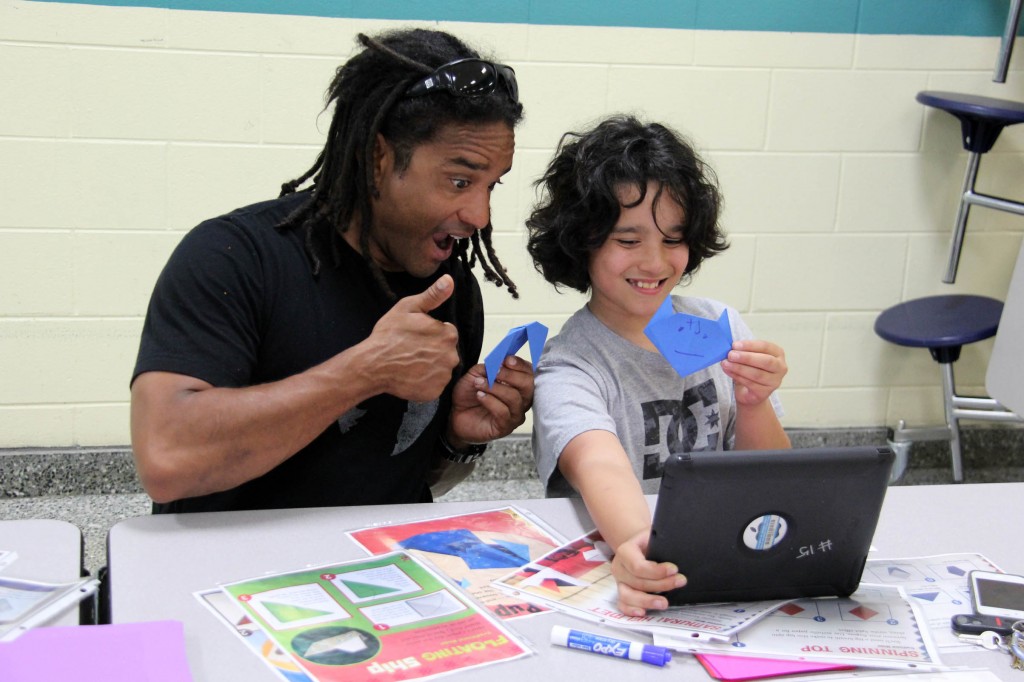 Both hands-on building and technology use were combined in a station featuring Lego StoryStarter kits. Students create story scenes with Legos, take photos with devices and use software to adjust visual styles of their imported images for a finished product.
Both hands-on building and technology use were combined in a station featuring Lego StoryStarter kits. Students create story scenes with Legos, take photos with devices and use software to adjust visual styles of their imported images for a finished product.
Rille purchased kits this year with support from a VBEF innovative learning grant and has seen more engagement from students who don’t typically enjoy writing.
“Kids who get stuck coming up with a story have a hard time and don’t know what to do. With this, they can build. Kids will build without thinking about it,” said Rille. “And then you ask them questions, ‘Well, why do you have this? Where is this taking place? Who is this character? Why did they show up?’”
When students begin to explain their scenes, Rille coaches them to make note of the details to help them write complete stories.
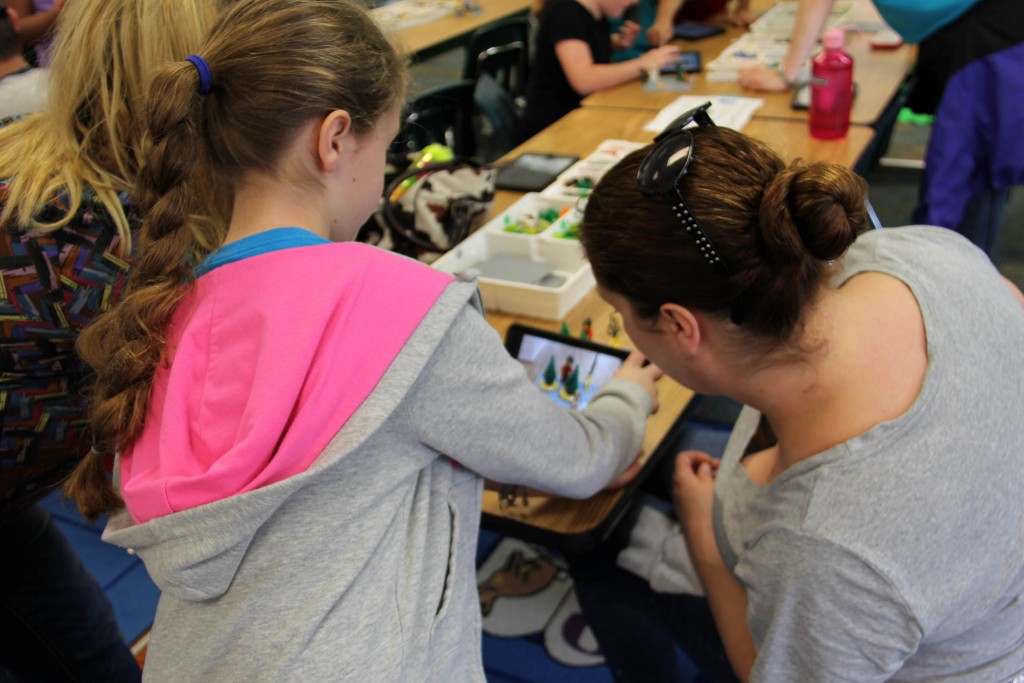 “Kids who don’t like to write, love to build,” Rille said. “You get that hook.”
“Kids who don’t like to write, love to build,” Rille said. “You get that hook.”
A student at the family makerspace event explained in detail the cops and robber scene he constructed. It featured four cops in uniform only inches from a fugitive with handcuffs dangling from one wrist.
It had a happy ending – for the robber.
“The cops are after him,” he said, “but he gets away even though they are really close.”
 Inviting parents to participate in makerspace activities after school hours was a first-time event for Cooke, and the positive response from attendees likely means it will host more opportunities in the future.
Inviting parents to participate in makerspace activities after school hours was a first-time event for Cooke, and the positive response from attendees likely means it will host more opportunities in the future.
“We hope families are excited about makerspace and the different ways of learning this brings the kids,” said Jensen. “It’s going to challenge them to think in a different way and learn different skills they’ll need when they graduate from school and go on to the workforce.”
